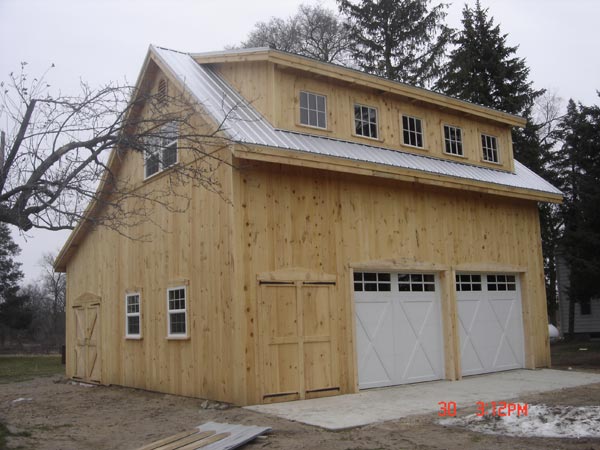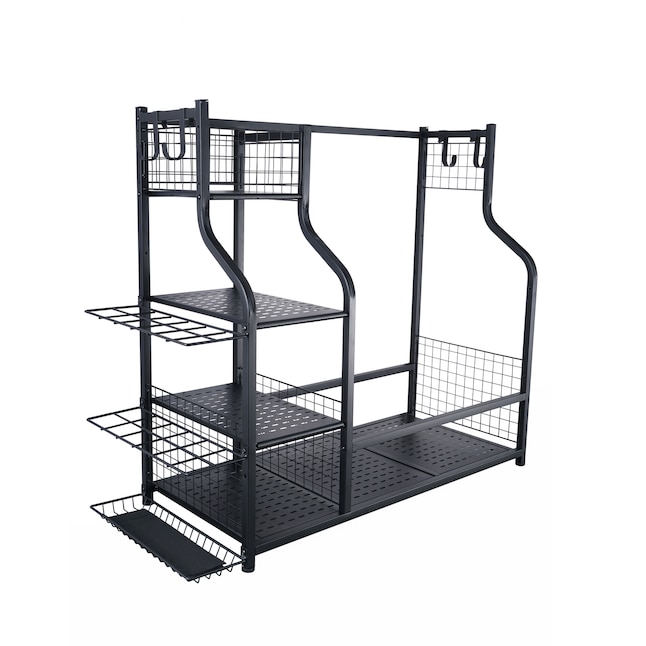
A garage conversion is a great option if you are looking to add an extra room to your home. It's a great way to get extra living space without squatting in a room with no windows. You can transform it into a home theater, lounge or kitchen. Before you decide to make your garage a living space, there are many things to think about.
Keep in mind that garages can be used as living spaces. If you intend to convert it into a home theater, an HVAC system will be required. The laundry room should be included in your plans.
Depending on the size and layout of your garage, you might be able to add either a wet or laundry room. These rooms are great for doing laundry and are easy to reach. The best part is that you can use your bathroom whenever you need it.

Another great use for garages is a home-bar. This room is ideal for socializing and requires only a few comfortable chairs.
You can use a small garage as an exercise space. You could even transform it into your own personal gym. Even garage design software tools are available to assist you in determining how to best use your space.
For a full-on garage-to-living-room transformation, expect to spend anywhere from $45,000 to $75,000. Of course, your exact cost will depend on the type of conversion you are planning. The majority of states require that a permit be obtained before construction can commence. You'll need to have a clear understanding of what you want.
Although a garage convert isn't necessarily the most economical way to make home improvements, it's a great way for your home to be more valuable. Your dream home can be realized if you hire a reliable contractor and stay within your budget.

In addition to its obvious benefits, a garage-to-living-room conversion is one of the cheapest ways to get more square footage in your home. You can use your garage to create more space for your family or your spouse. It is actually possible to convert your garage into an apartment.
The most important part of a garage-to-living-room transformation is making sure your new space is functional and aesthetically pleasing. Whether it's a kitchen-diner, a home bar, a bedroom, or a home cinema, a spruced-up garage can make your home a more enjoyable place to live. Are you still hesitant about converting your garage to your own private paradise?
While a garage-to-living-room remodel isn't for everyone, there are plenty of cases where it makes a lot of sense.
FAQ
What are the biggest expenses in remodeling a kitchen?
There are a few important costs to consider when renovating a kitchen. These include demolition, design fees, permits, materials, contractors, etc. However, these costs are quite small when taken individually. They quickly grow when added together.
Demolition is usually the most expensive. This includes the removal of old cabinets, countertops, flooring, and appliances. The drywall and insulation must then be removed. You must then replace these items with new ones.
Next, hire an architect who will draw plans for the space. Next, you must pay for permits to ensure the project meets building codes. You will then need to find someone to perform the actual construction.
Finally, once the job is done, you have to pay the contractor to finish the job. All told, you could spend anywhere between $20,000 and $50,000 depending on how big the job is. It is crucial to get estimates from several contractors before you hire one.
If you plan, you can often avoid some of these costs. You may be eligible to get better prices on materials, or you might even be able skip some of your work. It is possible to save money and time by knowing what to do.
For example, many people try to install their cabinets. This will save them money as they won't need to hire professional installation services. The problem is that they usually spend more money trying to figure out how to put the cabinets in place themselves. A job can typically be done in half the time than it would take for you by professionals.
Another way to save money is to buy unfinished materials. You should wait until all of the pieces have been assembled before you buy pre-finished items like cabinets. By buying unfinished materials, you can start using them right away. And you can always decide to change your mind later if something does not go according to plan.
Sometimes, it's just not worth the effort. Remember: the best way to save money on any home improvement project is to plan.
What should I do with my current cabinets?
It all depends on if you are thinking of selling or renting your home. If you intend to sell your home, you will likely need to remove and refinish cabinets. This gives buyers the impression that they're brand new and helps them envision their kitchens after moving in.
The cabinets should be left alone if you intend to rent your home. Renters often complain about dealing with dirty dishes and greasy fingerprints left behind by previous tenants.
You can also consider painting the cabinets to make them look newer. It is important to use a high quality primer and paint. Low-quality primers and paints can crack easily.
How can I tell if my house needs a renovation or a remodel?
First, you should look at whether your home has been updated recently. A renovation may be a good idea if there have been no updates for several years. If your home appears brand-new, you might consider a renovation.
A second thing to check is the condition of your house. You should inspect your home for holes, peeling wallpaper, and broken tiles. If your home is in good condition, it might be worth considering a remodel.
The general condition of your home is another important factor. Is your house structurally sound? Do the rooms look clean? Are the floors in good condition? These questions are critical when deciding what type of renovation you should do.
How much would it cost to gut a home vs. how much it cost to build a new one?
Gutting a home involves removing everything within a building including walls and floors, ceilings as well as plumbing, electrical wiring, appliances, fixtures, and other fittings. This is usually done when you are moving into a new home and need to make some adjustments before you move in. Because of the many items involved in gutting a house, it is usually very costly. Your job may require you to spend anywhere from $10,000 to $20,000 to gut your home.
A builder builds a home by building a house frame-by-frame, then adds doors, windows, doors and cabinets to the walls. This usually happens after you have purchased lots of lands. Building a home is typically cheaper than renovating, and usually costs between $15,000-30,000.
It all depends on what you plan to do with your space. You'll likely need to spend more money if you want to gut a property. But if your goal is to build a house, you won't need to disassemble everything and redo everything. You can build it as you wish, instead of waiting to have someone else tear it apart.
Why should I renovate my house instead of buying a new one.
Although it is true that houses become more affordable every year, you still pay for the same area. You get a lot more bang than you pay, but that extra square footage is still a significant expense.
It costs less to keep up a house that doesn't require much maintenance.
You can save thousands by remodeling your existing home rather than buying a completely new one.
Remodeling your current home can help you create a unique space that suits the way you live. Your home can be made more inviting for you and the family.
Is $30000 too much for a kitchen redesign?
The cost of a kitchen remodel can vary from $15000 to $35000, depending on the amount you spend. If you want a complete kitchen overhaul, expect to pay more than $20,000. For less than $3000, you can update appliances, add lighting, and replace countertops.
Full-scale renovations typically cost between $12,000 and $25,000. However, there are ways to save without sacrificing quality. A new sink can be installed instead of replacing an older one. This will cost you approximately $1000. A second option is to buy used appliances at half their cost.
Kitchen renovations are more time-consuming than other types of projects. Plan accordingly. You don't want your kitchen to be finished halfway through.
Start early. Begin looking at the options and getting quotes from different contractors. Then narrow your choices based price, availability, quality, or both.
Once you have identified potential contractors, request estimates and compare their prices. The lowest-priced bid isn't always the best choice. It's important to find someone with similar work experience who will provide a detailed estimate.
Remember to include all the extras when calculating the final cost. These could include labor costs, permits, and material charges. Be realistic about how much you can afford and stick with your budget.
If you're unhappy with any of the bids, be honest. Tell the contractor if you are not satisfied with the first quote. Give him or her another chance. Don't let pride get in the way when you save money.
Statistics
- $320,976Additional home value: $152,996Return on investment: 48%Mid-range average cost: $156,741Additional home value: $85,672Return on investment: (rocketmortgage.com)
- 55%Universal average cost: $38,813Additional home value: $22,475Return on investment: 58%Mid-range average cost: $24,424Additional home value: $14,671Return on investment: (rocketmortgage.com)
- 5%Roof2 – 4%Standard Bedroom1 – 3% (rocketmortgage.com)
- Following the effects of COVID-19, homeowners spent 48% less on their renovation costs than before the pandemic 1 2 (rocketmortgage.com)
- bathroom5%Siding3 – 5%Windows3 – 4%Patio or backyard2 – (rocketmortgage.com)
External Links
How To
How to remove tile grout from floor tiles
Most people are unaware of tile grouting. It is used for sealing the joints between tiles. There are many types of grout available today. Each one has a different purpose. We will demonstrate how to remove grout from tile floors.
-
Before you can begin the process, ensure that you have all necessary tools. You will need a grout cutter and grout scraper.
-
Now it is time to clean the grout and remove any debris or dirt that has gotten under the tiles. To remove grout, use the grout cutter and gently scrape any pieces. You should not damage any tiles.
-
Once you have cleaned everything up, take the grout scraper and use it to clean off any remaining grout. Step 4 can be completed if you have no grout.
-
Now you can get on with the next step. Make sure to take one of the rags out and soak it in water. You want to make sure that the rag gets completely wet. Once the rag is wet, you can dry it by wringing the cloth.
-
Place the wet rag onto the joint where the tile meets the wall. The grout will begin to crumble if you press down hard on the rag. Slowly pull your rag towards yourself and continue to pull it back and forth, until all grout is gone.
-
Continue with steps 4 through 5, until the grout is completely removed. Rinse the ragout, and repeat the process if needed.
-
After you have removed all grout, use a damp cloth to wipe the tiles' surface. Let dry thoroughly.